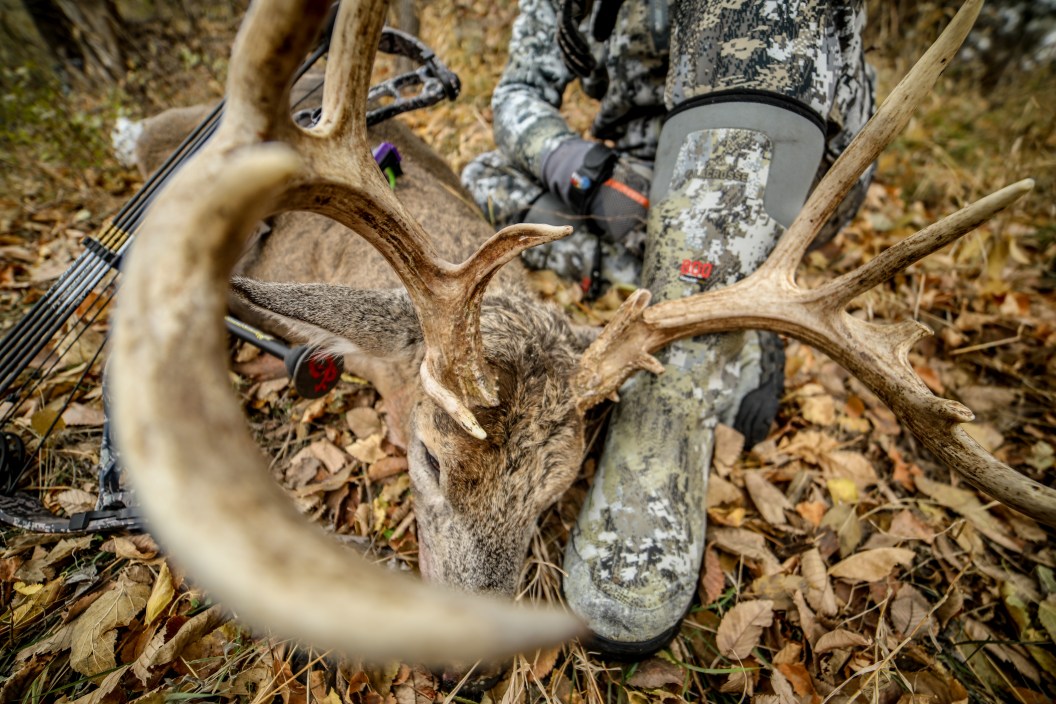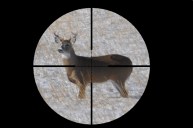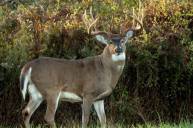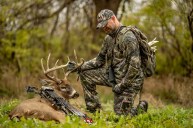The best place to aim on a deer is in the lungs and vital area, but sometimes the bullet connects in the gut area instead. This is called a gut shot—and it's not ideal.
A gut-shot deer won't die right away and may travel long distances before it falls. Deer that have been shot through the intestines may not leave a good blood trail to follow. Gut shots should be avoided at all costs while hunting, but hunters are humans, after all, and humans make mistakes.
The first thing is identifying if the shot connected in the gut area. This might be easier while bowhunting if you got a glimpse of where the arrow penetrated the body. While gun hunting it's trickier. Look for a hunched posture after the shot. If you have any suspicion at all that you made a gut shot, stay put for at least thirty minutes. Do not get up, do not climb out of the tree, do not exit your blind, and do not approach the area where you shot the deer. This is because if the gut-shot deer is nearby, your movement will spook it and it will get up and run far away, thereby making tracking his trail extremely difficult.
After the waiting period, the next few steps matter. Here is a breakdown of how to handle the situation of a gut-hit deer and salvage the precious wild meat.
What to Do After The Gut Shot
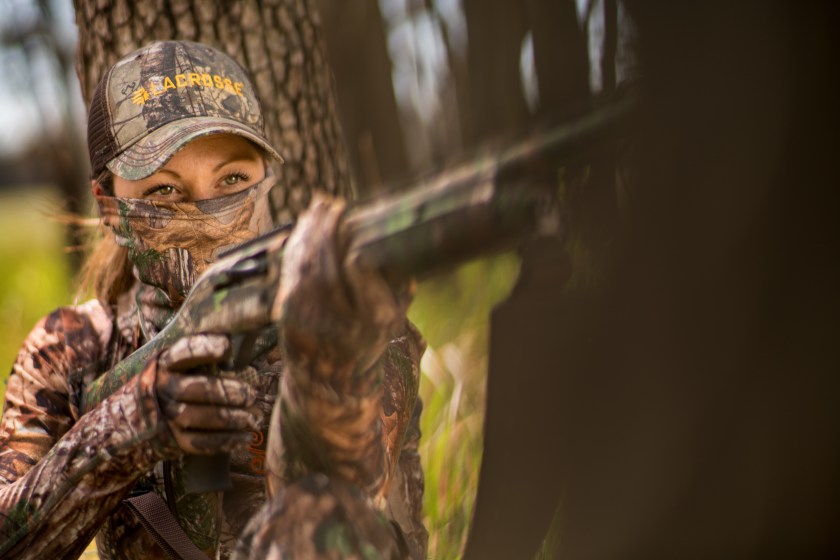
LaCrosse
You can usually tell if you made a lousy shot right after you pull the trigger. You might deduct whether the shot was further back than you intended. Or, maybe something went incredibly awry, and your bullet or arrow went deep into the gut. If you feel like you might not have hit dead on, here's what you'll do:
- Immediately take note of where precisely the deer is or was. Note where it was standing and facing, where it was headed, and what mistake you might have made. Use your phone's camera to take a picture of the area the deer was standing when it was shot. This helps as a reference if you have trouble locating blood.
- Don't bump or scare off the down deer. This is most important thing to do. Most seasoned hunters say if you bump a gut-shot deer, you'll never find it. That is often the case, but it doesn't have to be.
- Scan the area you last saw the deer for clues. Mostly, you're trying to deduce whether the shot was further back than you intended. Or, maybe something went incredibly awry, and your bullet or arrow went deep into the gut. More on this in a sec.
- Quietly slip out and wait 12 or so hours. A good rule of thumb is if you shoot the deer in the morning, don't look until the evening, and if you shoot it in the evening, don't look until the following morning. This will allow the deer to remain still and pass so you can retrieve it later.
What Clues to Look For
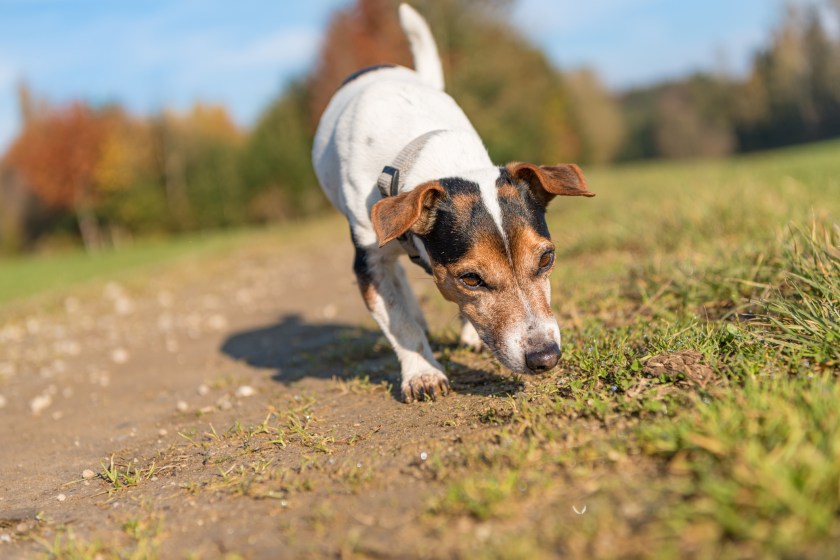
Getty, K_Thalhofer
Often, there will be clues left behind in the area where the deer was shot. Look for blood, fur, green bile, or any other bits of deer material. If the arrow or deer matter have a foul odor, that's a good indication of a gut shot. White tufts of fur from the underbelly and green or brown intestine contents can also indicate a gut shot. Making a liver shot will probably be easier to recover than putting a bullet, arrow, or crossbow bolt into the stomach or intestines. The blood trail can help you confirm whether it is a gut shot or not. If the red blood trail is sparse with bits of partially-digested food mixed in, odds are you did indeed make a gut shot instead of a shot to the vitals.
Even the pro hunters sometimes hit a deer in a less-than-ideal place. It happens, especially with bowhunting. Give yourself some grace but learn from your mistakes. At this point, all you can do is do your best to retrieve the deer. If you're lucky, you may be able to locate the deer from the last spot you saw it.
When trailing a gut-shot deer, carefully mark the last drop of blood as you go because the trail may become sparse. If you still have trouble finding it, consider finding a tracking dog to aid recovery.
How to Save The Meat

If you recover a gut-shot deer, do not fret, some of the meat can be salvaged. But be warned, you may not end up with as much meat as usual, and the tenderloins almost always can't be eaten. You need to field dress it immediately; it will be a messier job than usual. Take care to not allow any of the venison to come into contact with the gut matter and juices. Rinse the deer meat with cold, clean water as soon as possible.
Almost every deer hunter has their own theory on saving the most venison from the gut-shot deer. Some say to soak the meat in salt, baking soda, or vinegar.
Another theory is, if the weather is cool enough, to leave the deer hanging and dry age it, so to speak. This makes it so that when you go to process the meat, you can basically shave off the outer layer and are left with fresh red meat underneath. Judge the situation and make the best choice you can. Check each piece for appearance and smell as you work the meat off the bone. From here, the best way to maximize what you save is to plan on grinding it all, mixing in higher fat content, and turning it into sausages or jerky.
READ MORE: Why a Lung Shot is the Best Shot Placement on Deer
